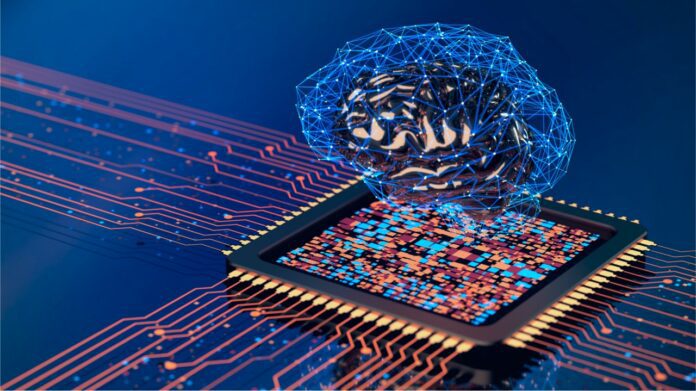Table of Contents
Best Ways to Get Started With Machine Learning from Scratch 2022 Guide
Machine Learning as a field of study and as a career option has flourished in recent years. The growth of this field has been notable, and as a result, there have been multiple opportunities for aspirants who want to make a career in this field. Recent reports from leading job sites like Monster and Indeed have revealed that ML Engineering jobs are highly sought after.
So, it is only fair for the aspirants to have clarity on the best ways to learn Machine Learning, and if they can do it from scratch then it is even better as they will have a strong foundation.
What are the best ways to learn Machine Learning from scratch?
If you look at the stats for the salary of machine engineers, you will certainly be impressed by what this field has to offer. According to various reports, the demand for ML engineers has risen by almost 350% approximately. The average base salary of an ML engineer in India is ₹ 6.8 Lakhs a year for beginners, and the experienced ones have an even higher package.
Furthermore, you could also climb higher on the corporate ladder by heading towards AI or even data science because these fields have similar roots and multiple intersecting concepts.
Considering the popularity of the field, the aspirants are many, but a single problem that has been persisting here is – what is the best way to learn Machine Learning?
The confusion here is primarily due to the fact that there are multiple paths to move towards the same goals. Machine Learning forms a core component of some of the dynamic career domains like Computational Statistics, Predictive Analytics, Data Mining and Big Data.
Both online and offline AI and machine learning course will help you achieve the goal of building up your knowledge in Machine Learning. Moreover, the correct ML skills could help you convert your career path from a fairly ordinary job to an extraordinary one.
Machine Learning: Getting started
Machine Learning consists of algorithm synthesis, data processing and automation. Not only is it a rewarding choice of career, but it is also a field where you can acquire skills faster than in other IT domains. The only requirement to learn ML from scratch is that you need to possess the best research skills. Of course, this requires tons of patience. Along with this specific trait, you must back your base with programming and mathematical knowledge, especially in statistics and probability. As far as programming languages are concerned, ensure your Python knowledge is spot on.
The best thing about Machine Learning is that it invites people from diverse backgrounds. So, they bring in their knowledge and experiences along with them. This helps Machine Learning to expand in every field. This unique experience enables Machine Learning engineers to manage the challenges of different fields, hence the demand for their services.
Machine Learning engineers can use their specialised knowledge and flexibility to move into job roles like an NLP (Natural Language Processing) Scientist, Business Intelligence Developer, or Human-Centred Machine Learning Designer. Hence, you can forge your machine learning career path.
But before we explore gaining Machine Learning expertise right from scratch, let us first understand what machine learning is and what all does it cover?
What is Machine Learning, and what does it cover?
First coined by Arthur Samuel, a pioneer in the field of Artificial Intelligence, he gave it a nice description. According to Samuel, the definition of Machine Learning is the domain of study which makes computer systems capable of learning anything without being programmed explicitly.
Simply said, it means computerised machines (machines with CPUs) can learn from observation and experience of action. This reduces the programming bit considerably, as the computer can generate code based on many pre-fed algorithms. Machine Learning combines the statistics and coding capability of computers in such a manner that enables the machines to identify data trends in the given dataset independently. These datasets contain a large amount of data.
The computers are trained to make sensible decisions from these big datasets by incorporating ML models and algorithms. But this ML training can be approached in four basic ways. They are:
- Reinforcement learning
- Supervised learning
- Semi-supervised learning
- Unsupervised learning
Based on the type of dataset that is available, Machine Learning engineers make their decisions on the type of approach they would use to handle the set of tasks or challenges. After they decide on the approach type, they develop a model. The model observes and analyses the data set to make its inferences. Slowly, it takes on more tasks and repeats the process of analysis and inferences, thereby becoming smarter. The model gradually improves its skillset and precision to deliver the required results.
In a way, they are imitating the humans who have constantly been learning and evolving from day one.
So, anybody who needs to learn ML from scratch needs to try to understand these four approaches constantly, and their learning will depend on these approaches only.
What are the easy steps to learning ML?
The easiest way to start learning ML is to enrol yourself in a reputed institution, and it is also considered the best way to learn Machine Learning. Here you can learn Machine learning from industry veterans who have already spent a big chunk of their time building real-world projects. So, they very well know what all skills are necessary and what all fluff should be avoided. These trainers or mentors bring a practical approach to incorporating ML skills in aspiring ML engineers.
The other way is to start learning all by yourself. Here, you will be able to choose the courses which you need at a time. This flexibility will give you the additional ability – to make your own decisions. This is very handy when you are developing a project all by yourself. Manning your project helps to build up leadership skills which are extremely important in the longer run.
Getting started with Machine Learning? So read carefully about what comes next. First of all, you should be able to segregate the skills you need to learn Machine Learning. You need:
- Mathematical skills
- Programming skills
Conventionally, aspiring ML engineers will, first of all, invest time in mastering the theoretical mathematics utilised in Machine Learning. Then they will spend some additional time mastering it. Suppose you have opted for a tutorial route, where experienced ML engineers will teach you. In that case, you will be able to learn the essential concepts and skim through the sheer volume of concepts you need to understand to get started with Machine Learning. There is a gamut of textbooks and academic papers that you need to go through to learn a concept.
But if you are on the self-learning route, you will have difficulty learning and following up. We recommend you enrol in an online course (free or paid) and keep moving ahead in your Machine Learning journey. One thing is guaranteed if you are taking the self-learning route, you will have a lot more fun and will get to explore different things with better in-built concepts. That’s because you have learnt everything on your own. So, it’s apparent that you will have a better command over the concepts.
So, what is the best way to learn Machine Learning from scratch? It is totally up to you. Whichever way you feel works best for you, you ought to go down that route. Whatever you choose, you need to make sure you have a handful of projects in your portfolio that you can show during your selection interview.
Before we head over to the next section, we would also like to share another tip with you. The employers who are hiring you do not care if you have done ML from a reputed institution or by yourself; they only care if you know how to do the job correctly. If you can do that even better than their staff, you will be appreciated.
What are the best Machine Learning courses?
There are certain prerequisites before you opt for the Machine Learning course. They are four in number and extremely vital in helping you initiate and carry on with your Machine Learning journey. They are:
- Building a foundation of Maths – statistics and probability
- Learn programming – Python is what you need to master. If you want to widen your skillset, R would undoubtedly be helpful.
- Try understanding the essential theories behind ML. You also need to know how to use the compulsory ML packages.
- Dig deeper into the ML domains with larger Machine Learning projects.
Moving ahead, before we jump into Machine Learning, we will be enlisting the essential topics that you need to know in Maths for Machine Learning. A small description has also been provided of what you need to learn.
- Statistics –Combinatorics, Bayes’ Theorem, Variance and Expectation Random Variables, Standard Distributions (Multinomial, Uniform, Bernoulli, Binomial and Gaussian), Conditional and Joint Distributions.
- Probability –Rules of probability, probability axioms, probability moments, marginal and conditional probability.
- Linear Algebra –Logistic regression, decision trees, linear regression and support vector machines (SVM).
- Multivariable Calculus –Differential and Integral Calculus, Partial Derivatives, Directional Gradient, Hessian, Jacobian, Vector-Values Functions, Laplacian and Lagrangian Distribution.
Furthermore, in programming, most of your needs will keep on revolving around Python because it is one of the extensively used programming languages in the Machine Learning domain. You will need to know basic things like loops, arrays and tuples, and how to make some basic programmes in Python. Along with that, you need to have some knowledge of the following Python Libraries:
- NumPy –Aids in the easy computation of numerical data.
- Pandas –It is a library that helps in extensive manipulation and helps to perform exploratory analysis.
- Matplotlib –It is a flexible plotting and visualisation library.
- Scikit-learn –General purpose ML library in Python. It is useful for functions like cross-validation and pre-processing.
- Seaborn – For easier plotting of graphs and other forms of data visualisations.
Besides, you also need to increase your command of these 9 essential topics in Machine Learning:
- Creating a bird’s eye perspective – Theory about ML, particularly the bias-variance tradeoff.
- Optimisation – Finding the best model parameters.
- Data Pre-processing – Handling missing data, skewed distributions, outliers, etc.
- Splitting and sampling – Tuning data to avoid over-fitting.
- Supervised learning – Learning from labelled data with the help of regression and classification models.
- Unsupervised learning – Learning from unlabelled data with the help of factor and cluster analysis models.
- Ensemble learning – Obtaining better performance by combining various models.
- Model evaluation – Decision making by basing them on several metrics of performance
- Business applications – Real-world usage of ML in businesses.
These are, in brief, the proper way to get started with the Machine Learning course. There are multiple resources available, both online and offline. You need to choose a reliable AI and ML course to help you begin and establish a successful career in this field.












